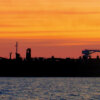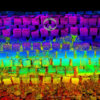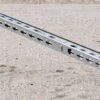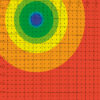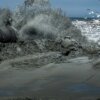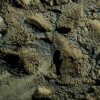The development
Amatique terminal is a new port in a greenfield location along the Caribbean coast in the bay of Amatique, north of Puerto Barrios, in Guatemala (Figure 1). The terminal is designed for handling containers, general cargo and liquid bulk. The development consists of a port basin (dig-in), storage and handling areas. A new navigation channel will be dredged over a length of 4.3 kilometres (km) and will connect the existing navigation channel to the ports of Santo Tomas and Puerto Barrios with the Amatique terminal.
Amatique Bay is locally rich in biodiversity, especially in the shallow coastal areas where there are habitats of mangrove and seagrass, important for various marine wildlife including the manatee. These coastal areas are, for a large part, protected by Guatemalan Law (Decreto 4-89). Just north of the proposed terminal is the Punta de Manabique Wildlife Refuge, which is also recognised as a ‘Wetland of International Importance’ under the Ramsar Convention (www.ramsar.org). Information on habitats and species is scarce.
The bay is no longer a pristine natural system, as human activities have a negative effect on the habitat. The towns of Puerto Barrios and Santo Tomas, with their ports (and access channel), industrial activities and urban population concentrations generate wastewater that drains into the bay. There are cargo and passenger sea vessel movements, as well as commercial and artisanal fishing activities ongoing in the bay. In addition, mangrove habitats are often affected by recreational and agricultural practices. Hence the fact that the bay is only locally rich in biodiversity.
Port location and design
Different locations and designs were considered to develop the best alternative matching the requirements for the port and the value of the environment. Amatique terminal is proposed to be located north of Puerto Barrios (Figure 1). Here, the terminal will be protected from waves, with a good connection to hinterland infrastructure and away from various protected areas as much as possible.
A choice was made for a compact inland (dig-in) port, which reduces the visual impact of the port and integrates the terminal in the natural land- and seascape. The effect on the wildlife refuge would be reduced by limiting the permanent intrusion of the protected area and providing an opportunity to dig a large part of the port in a contained area, reducing plume extension and risks of spills. The downside of this choice is that the volume of earthworks is relatively large.

















































